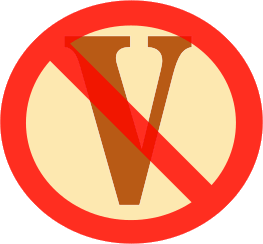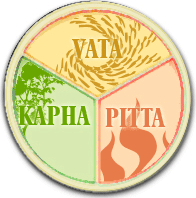Categories in Blood and CirculationTemperature SignsWater RegulationCirculationHeartLymph / Blood PlasmaRed Blood CellsImmune-SystemLiver & GallbladderAround EyesEyesTongue CoatingTongue Surface / CracksTongue BodyPulseOverview
Don't know your body type? Take our free Dosha quiz!
TAKE THE QUIZ
20 likes ![Save this Symptom. Save this Symptom]() SAVE SYMPTOM SAVE SYMPTOMThe liver, heart, brain, and genitals are most sensitive to heat. Heat also aggravates a rash, or any inflammation in the body.
30 likes ![Save this Symptom. Save this Symptom]() SAVE SYMPTOM SAVE SYMPTOMHeat generally aggravates inflammation, including rashes. High metabolism, peri-menopause, and obesity are other common causes of overheating.
17 likes ![Save this Symptom. Save this Symptom]() SAVE SYMPTOM SAVE SYMPTOMWhen you feel hot in your torso area, but also have cold extremities, it can indicate poor circulation and overcompensation by the heart. Sweet, thick Kapha blood is the likely culprit.
40 likes ![Save this Symptom. Save this Symptom]() SAVE SYMPTOM SAVE SYMPTOMSensitivity to heat indicates various patterns of imbalance. Sometimes the body becomes hot when deficient (as in dry eczema, or yin-deficient heat of Chinese medicine). Otherwise, heat may come from some kind of internal inflammation. A fever is a...
23 likes ![Save this Symptom. Save this Symptom]() SAVE SYMPTOM SAVE SYMPTOMA Vata person feels cold due to stress, light clothing or deficiency - anemia, skipping meals, low blood sugar levels, high metabolism, excessively light foods, etc. A Kapha person feels cold due to depressed metabolism, low heart rate, and lethargy,...
116 likes ![Save this Symptom. Save this Symptom]() SAVE SYMPTOM SAVE SYMPTOMLow metabolism is a Kapha condition often appearing with hypothyroid, anemia, and poor circulation. Exercise, spicy foods, and avoiding foods with gooey, oily, and sweet qualities often helps in this type.
65 likes ![Save this Symptom. Save this Symptom]() SAVE SYMPTOM SAVE SYMPTOMCold extremities can imply a blood deficiency such as anemia, poor circulation from dehydration or congestion, a low metabolism, low blood sugar levels, insufficient clothing or fat, or stress. A chronic infection such as candida can rob the body of...
![]()
ENZYME DEFICIENCIES
FREE PRESENTATION
IMPROVE ENZYME OUTPUT & MASTER YOUR DIGESTION
GET IT NOW FREE
22 likes ![Save this Symptom. Save this Symptom]() SAVE SYMPTOM SAVE SYMPTOMOur body redirects blood flow to digest a meal, when thinking, to fight an infection, or when exposed to the cold. If you are chronically cold, suspect either deficiency of ojas or fungal/pathogenic infection (a heat condition).
57 likes ![Save this Symptom. Save this Symptom]() SAVE SYMPTOM SAVE SYMPTOMKapha people become cold when metabolism is low or circulation is poor (Kapha). Vata people are cold when the skin is too dry, there is a lack of adequate fat tissue in the skin, or blood sugar levels are low. Pitta people feel cold when they radiate...
13 likes ![Save this Symptom. Save this Symptom]() SAVE SYMPTOM SAVE SYMPTOMBluish or purple lips may be a sign of cold, such as when a child swims in cold water for several hours. Or, it may be a sign of blood stagnation due to other reasons.
12 likes ![Save this Symptom. Save this Symptom]() SAVE SYMPTOM SAVE SYMPTOMBlue skin is a sign of blood stagnation due to coldness or dryness.
32 likes ![Save this Symptom. Save this Symptom]() SAVE SYMPTOM SAVE SYMPTOMPale skin can come from anemia or other blood deficiencies (Vata), low basal body temperature, or poor circulation at the surface of the skin. Often, poor circulation is related to thick, rich blood (Kapha).
16 likes ![Save this Symptom. Save this Symptom]() SAVE SYMPTOM SAVE SYMPTOMA blue / purple tongue indicates internal blood stagnation (Kapha) or cold quality (Vata).
11 likes ![Save this Symptom. Save this Symptom]() SAVE SYMPTOM SAVE SYMPTOMA bright red tongue can indicate heart heat or blood stagnation.
![]()
AYURVEDIC FACE ASSESSMENT
FREE PRESENTATION!
Learn how to assess constitution by a person's face.
GET IT NOW FREE
2 likes ![Save this Symptom. Save this Symptom]() SAVE SYMPTOM SAVE SYMPTOMA bright red tongue can indicate heart heat or blood stagnation.
16 likes ![Save this Symptom. Save this Symptom]() SAVE SYMPTOM SAVE SYMPTOMBlue nail-beds signify stagnant blood, which may be due to poor circulation or low blood pressure.
61 likes ![Save this Symptom. Save this Symptom]() SAVE SYMPTOM SAVE SYMPTOMShadows under the eyes imply Vata type ama in the colon or gall bladder stagnation.
16 likes ![Save this Symptom. Save this Symptom]() SAVE SYMPTOM SAVE SYMPTOMWarm and rosy skin is a sign that blood vessels are dilated close to the surface of the skin. This may be due to a variety of causes, including lymphatic stagnation, general inflammation, toxic buildup, excess heat, fever, or chronic infection. Ideally...
33 likes ![Save this Symptom. Save this Symptom]() SAVE SYMPTOM SAVE SYMPTOMRedness or flushed skin is generally a sign of heat and inflammation (Pitta). This internal heat may be due to fever, skin allergies, toxins from inflammatory processes, infection, or buildup of toxins in the skin.
Skin may also be flushed due to...
40 likes ![Save this Symptom. Save this Symptom]() SAVE SYMPTOM SAVE SYMPTOMThe body releases toxins through the digestion, urine, skin & lungs. Rashes may result when there are too many toxins, or the liver becomes otherwise aggravated. Some rashes may be infectious and require a visit to a medical doctor.
All rashes are...
![]()
AYURVEDIC SPEECH ASSESSMENT
FREE PRESENTATION!
Learn how to assess constitution by a person's speech patterns.
GET IT NOW FREE
22 likes ![Save this Symptom. Save this Symptom]() SAVE SYMPTOM SAVE SYMPTOMDermatographism, the ability to 'draw' on the skin, is a sign of capillary vasodilation due to Pitta type toxicity. It may indicate lymphatic stagnation as well.
35 likes ![Save this Symptom. Save this Symptom]() SAVE SYMPTOM SAVE SYMPTOMHives are a sign of allergy and aggravated Pitta, or lymphatic congestion in aggravated Kapha.
4 likes ![Save this Symptom. Save this Symptom]() SAVE SYMPTOM SAVE SYMPTOMA sign of aggravated / inflamed blood (rakta) in Ayurveda.
27 likes ![Save this Symptom. Save this Symptom]() SAVE SYMPTOM SAVE SYMPTOMThe eyes may be bloodshot from a lack of sleep (Vata), irritation from contact lenses or debris (Vata), allergies (Pitta), a heat condition and even blood stagnation. Cucumbers on the eyes, cleansing the blood, and soothing the liver may help.
23 likes ![Save this Symptom. Save this Symptom]() SAVE SYMPTOM SAVE SYMPTOMSkin may become lusterless and dull when
Circulation to the skin is poor
Toxins (ama) in circulation are released through the skin
Poor Circulation
Poor circulation causes the skin to appear lifeless. Lusterless...
![]()
IDENTIFY YOUR BODY
TYPE SAMPLE LECTURE!
LEARN HOW TO IDENTIFY YOUR BODY
TYPE WITH THIS 45-MINUTE SAMPLE
LECTURE FROM JOYFUL BELLY
GET IT NOW FREE
7 likes ![Save this Symptom. Save this Symptom]() SAVE SYMPTOM SAVE SYMPTOMPink skin appears predominantly pink in color. It can be a sign of strong, healthy circulation of blood to the surface of the skin.
However, in some cases, skin may appear pink if it is inflamed, irritated, or there is sun damage. Pink or inflamed...
20 likes ![Save this Symptom. Save this Symptom]() SAVE SYMPTOM SAVE SYMPTOMOily in the T-zone only implies that heat/blood is moving upward into the head.
17 likes ![Save this Symptom. Save this Symptom]() SAVE SYMPTOM SAVE SYMPTOMOily face can indicate heat moving upward, especially when the extremities are cold. It can also indicate that sweet, Kapha thick blood is blocking circulation to the extremities.
32 likes ![Save this Symptom. Save this Symptom]() SAVE SYMPTOM SAVE SYMPTOMA person may flush easily when they are overheated, experience intense emotions, due to toxicity or hormone fluctuations, or after indulging in Pitta aggravating foods or lifestyle. Intense emotions can trigger an increase in the heart rate or...
30 likes ![Save this Symptom. Save this Symptom]() SAVE SYMPTOM SAVE SYMPTOMSweating often may indicate congested fluids, or excess fat tissue. The backed up fluids can causes clamminess in hands or feet especially.
A heat condition, a dry-heat condition, or irritating toxin can also cause the pores to open...
26 likes ![Save this Symptom. Save this Symptom]() SAVE SYMPTOM SAVE SYMPTOMSweating rarely may indicate chronic dehydration, electrolyte imbalance such as magnesium deficiency, or other factors. Drinking inadequate amounts of water, urinating or passing too much liquid in the feces will reduce the amount of sweating. The...
17 likes ![Save this Symptom. Save this Symptom]() SAVE SYMPTOM SAVE SYMPTOMPale lips may be a sign of anemia or other blood deficiencies. It could be a sign of vasoconstriction due to cold or other circulatory issues.
2 likes ![Save this Symptom. Save this Symptom]() SAVE SYMPTOM SAVE SYMPTOMRedness of the ears could be a sign of upward moving heat (Pitta). Ears may be red continuously, after eating, after eating red meat or spicy food, or not at all.
![]()
FIVE-DAY AYURVEDA CLEANSE
REMOVE TOXINS FROM YOUR BODY,
CREATE A HEALTHY ROUTINE & IMPROVE
YOUR DIGESTION IN JUST 5 DAYS.
GET IT NOW FREE
![ayurvedic diet]() 1 | 2 ![ayurvedic diet]() BLOOD AND CIRCULATION TIPSDISCLAIMER: The pathogenesis of each person's condition is unique, and so the diet must be fit to the individual and the unique root causes of the condition in your body.
The information on this page is for educational purposes only and should not be used to treat a medical condition. It is not a substitute for medical care.
Please check with your doctor before making any changes to your health and wellness routine.
HOW AYURVEDA WORKS
ARE YOU WONDERING HOW AYURVEDA CAN HELP YOU?
WHY IS AYURVEDA THE RIGHT SOLUTION?
Ayurveda strengthens the body while opposing disorders. It takes a holistic,
systemic approach that looks at the whole body. Ayurveda
shows how to interpret signs and symptoms of imbalance, and how to address them
using diet, lifestyle adjustments, and herbs. It shows a person how to optimize their health on a continual basis. You can't
take the doctor home with you, but you can take Ayurveda home with you.
Ayurveda is the most advanced and easy to use home system for self healing.
HOW DOES AYURVEDA WORK?
Ayurveda starts by identifying your body type,
which identifies certain tendencies in your body to get sick (as well as identifying your strengths).
It uses body type to determine the likely root causes of your disorders.
Next, Ayurveda analyzes the nature of your disorder.
It fits all your signs and symptoms into a pattern, expressed as a combination of biocharaceristics (gunas).
For example, you may have a heat disorder, a cold disorder, or an oily disorder, etc.
This simple categorical approach shows you how to correct systemic imbalances and strengthen your body as a whole.
On Joyful Belly, we've created an extensive categorization of food so you can easily match food to your imbalanced biocharacteristics.
By eating an optimal diet that balances your biocharacteristics, your whole body is strengthened
and the conditions that created the disorder are removed. Once the root causes of the disease
are removed, the disease lessens in strength or disappears altogether. Additional remedies -
such as herbs and lifestyle practices - focused on the specific disorder, can greatly enhance
your healing.
GET STARTED
To get started on your Ayurvedic journey, we first recommend that your find your body
type by taking our free quiz. In Ayurveda, every solution is based on your unique body type, so
by taking this quiz, you’ll get the best results.
FIND YOUR BODY TYPE
Suggest a symptom |

 SAVE SYMPTOM
SAVE SYMPTOM SAVE SYMPTOM
SAVE SYMPTOM SAVE SYMPTOM
SAVE SYMPTOM SAVE SYMPTOM
SAVE SYMPTOM SAVE SYMPTOM
SAVE SYMPTOM SAVE SYMPTOM
SAVE SYMPTOM



 (1.00 out of 5 stars) 1 rating, 25 likes
(1.00 out of 5 stars) 1 rating, 25 likes SAVE SYMPTOM
SAVE SYMPTOM SAVE SYMPTOM
SAVE SYMPTOM SAVE SYMPTOM
SAVE SYMPTOM SAVE SYMPTOM
SAVE SYMPTOM SAVE SYMPTOM
SAVE SYMPTOM SAVE SYMPTOM
SAVE SYMPTOM SAVE SYMPTOM
SAVE SYMPTOM











 1 |
1 | 




